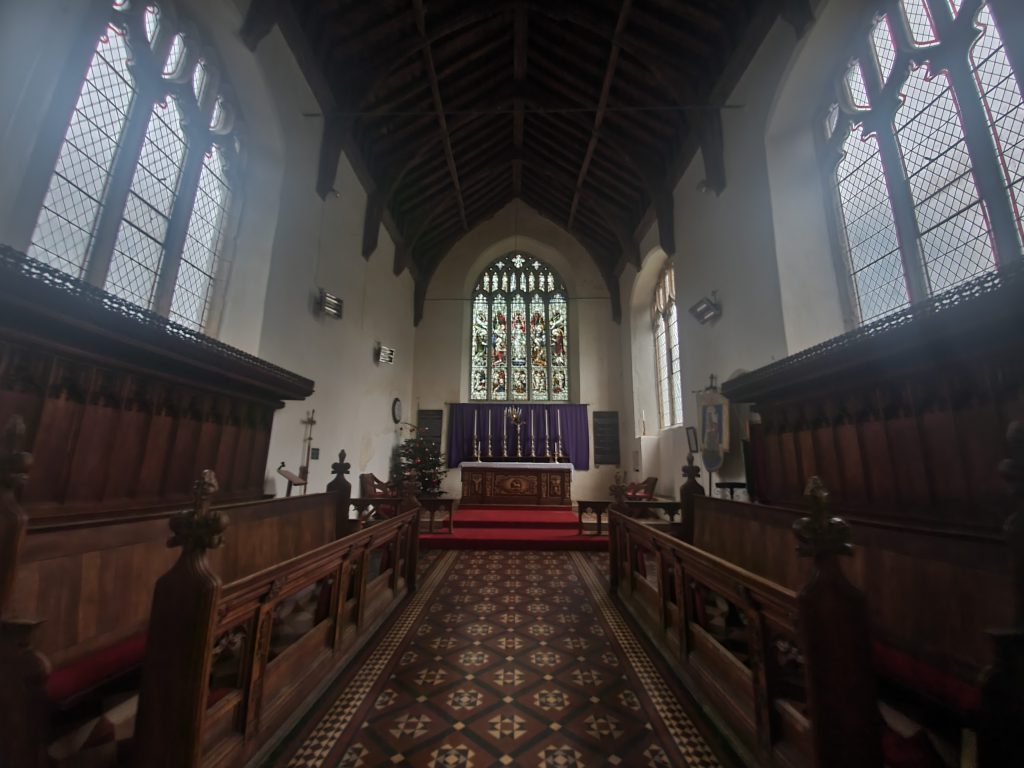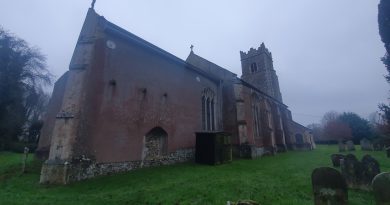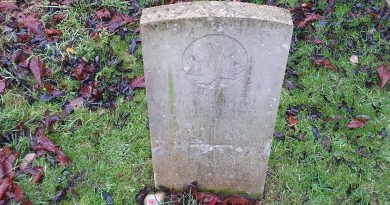Bunwell – St. Michael and All Angels Church
Richard and I were on one of our meanders around churches in Norfolk, rather more challenging with it getting dark quite so early on in the day. This Grade I listed grand church is located a little outside of the rather spread out village of Bunwell and it was primarily built in the mid to late fifteenth century on the site of an earlier structure. It’s thought that the location of the church was chosen as it was the highest land in the area which was once home to an early stone cross.
The tower dates from the early sixteenth century and there are six bells inside. The helpful history guide in the church notes that these are from 1699, 1699, 1732, 1732, 1832 and 1884 (the most recent, but a recast of a bell from 1612).
The porch.
Quite a small priest’s door.
The end of the chancel, looking a little plain because of the rendering.
I’ll stop my little tour of the exterior here to add in a news report from Easter Sunday in 1894, which doesn’t appear in the church’s history inside the building. What happened caused quite a sensation in the area, as there was an attempt to blow the church up (or at least badly damage it) with explosives. Fuses had been placed in the ground with gunpowder, but they had failed to ignite and so no damage was done. The police were bemused and said they weren’t sure that they would find the culprit.
The story continues though, as the police arrested someone on some rather loose evidence, a Lambert Johnson who was aged 41 and who had done work on the church that he claimed that the previous rector hadn’t paid for. The trial ended in chaos, with the local newspaper reporting:
“His Lordship said to the jury: You will find a verdict of not guilty. There is not a particle of evidence against the prisoner. I don’t hesitate to say that this is a most improper prosecution – one brought without the slightest conceivable grounds. It is too bad that this man should be five or six weeks in gaol awaiting trial”.
Although if I’m being honest, Johnson does seem like a prime candidate here.
Only one side of the chancel has the large perpendicular windows, this side is rather more barren. My knowledge of churches isn’t sufficient to say what has gone on here, nor what those three bits of stone on the left are supporting. The rendering has also made it difficult to see what is underneath.
This former window or door has been uncovered, perhaps leading to another structure at some stage in the building’s history. If anyone knows, please do contact me….
The porch way and I wasn’t expecting that we’d be able to get into the church. It was though open, which was something of a surprise. It was dark inside and we decided against finding the lights, but fortunately my phone in night mode actually made it look quite bright internally.
This is a spacious church, but it was constructed without any aisles, which seems a little unusual for such a grand project.
The choir seating, with these stalls first used at the memorial service for King Edward VII which was held on 29 May 1910.
The pulpit, which is just over 100 years old, dating from a similar period to the choir stalls following a period of a very leaky roof damaging some of the interior.
The chancel end.
Looking back towards the church tower.
That’s quite an impressive roof, stripped back and partly replaced in 1908 as it was leaking badly. The church then had to turn its attention to the tower, which was in “a very dangerous condition”.
Above the North Door are the Royal Arms of Queen Anne.
The font is from the fifteenth century.
One of the old oak panelled chests which would have once stored important church documents.
A really rather lovely church and it does the parish great credit that they’ve made an effort to open the building up. I also liked that they had produced a history of the church for visitors, it all felt really quite welcoming even though we didn’t see anyone during the visit. The churchyard, of which more in another post, is relatively large and has had at least two separate extensions added to it.




















